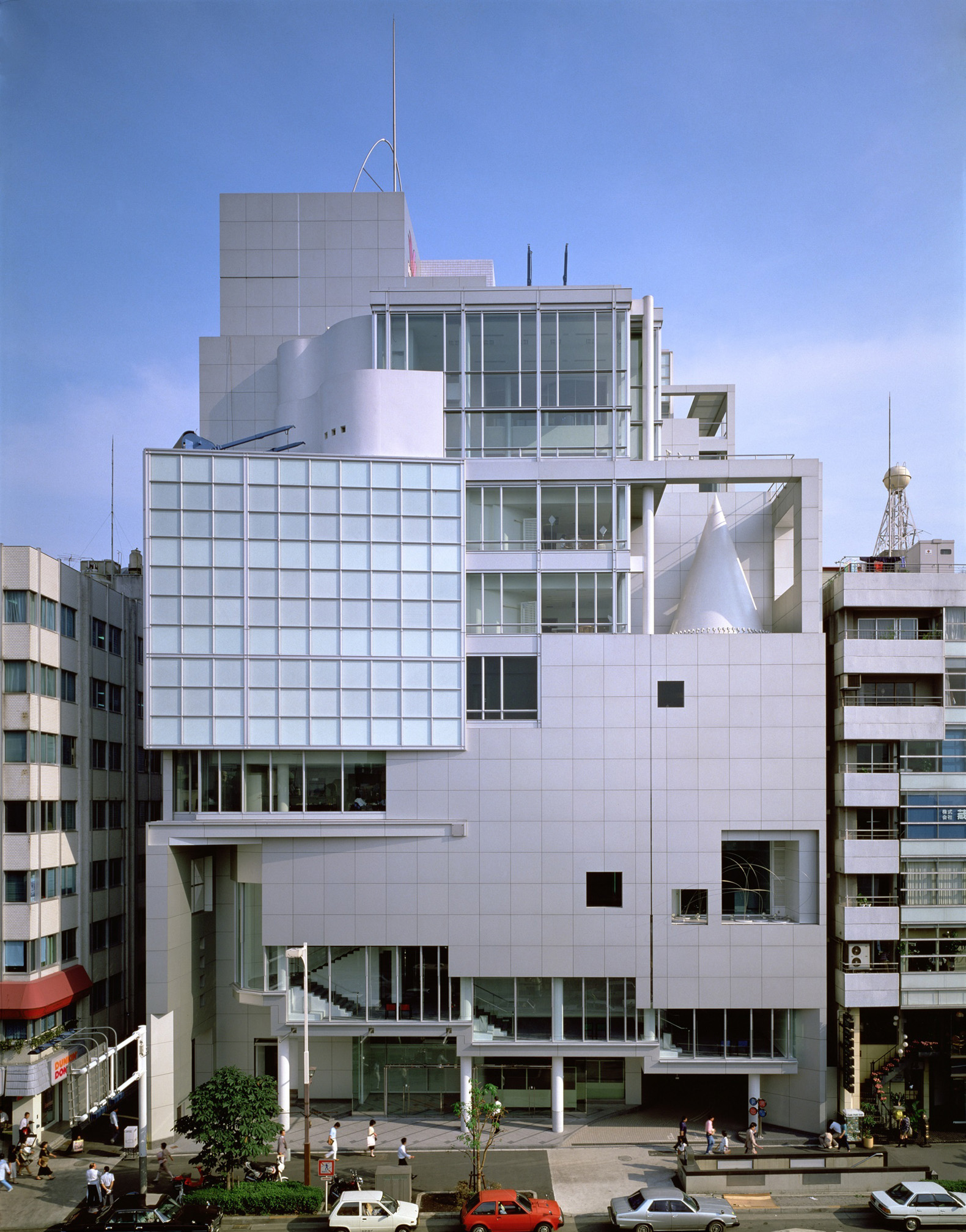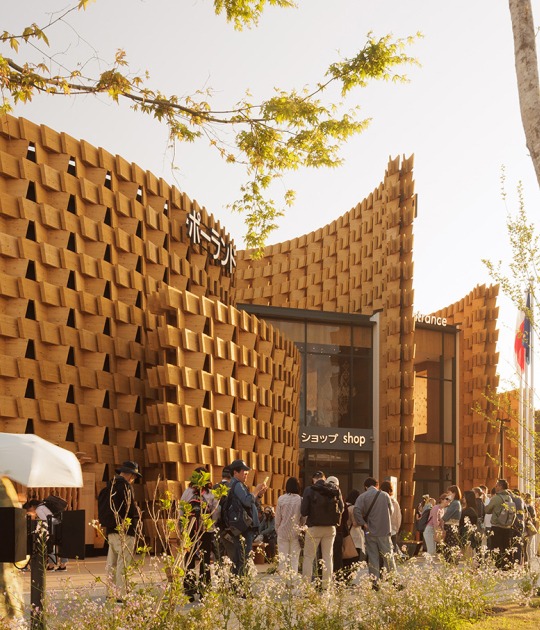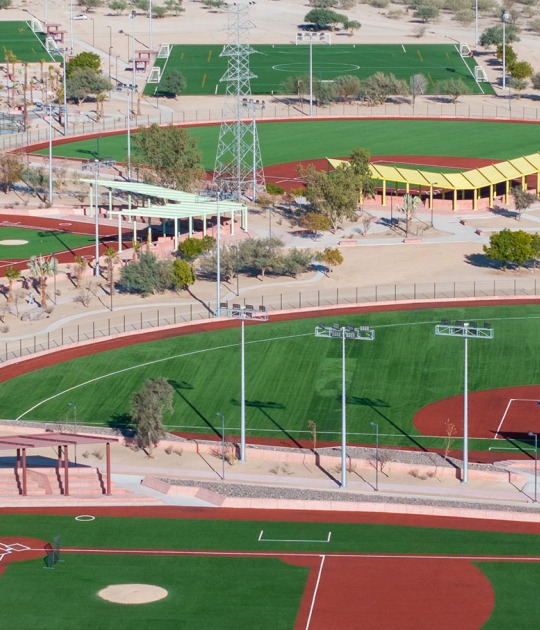
Unbuilt 1952 proposal for Shinjuku workplace towers (Courtesy Washington College).
Maki was part of Japan's Metabolist movement, joining Kisho Kurokawa and Kiyonori Kikutake in 1960, where his work has been described as more "grounded" compared to the extreme utopias of Kurokawa and Kikutake. Maki's 1960 essay Towards Group Form (written with Masato Otaka) is credited with ushering in a new era of Japanese architecture.
Maki returned to Tokyo to found his practice in 1965. One of Maki's first major projects in Japan was Hillside Terraces, an apartment complex in the Daikanyama district of Tokyo, which he completed in 1969. Shortly after, he would make an interesting pavilion with Kenzo Tange and Uzo Nishiyama for Expo '70 and two years later, the Osaka Prefectural Sports Center would be completed.
The diverse works of civic designs and public buildings that helped cement his reputation include the Aga Khan Museum in Toronto, the Tokyo Metropolitan Gymnasium, the Osaka Prefectural Sports Center, the Annenberg Public Policy Center and the Yerba Buena Center for the Arts in San Francisco.

“He is a modernist who has fused the best of both Eastern and Western cultures to create an architecture representing the age-old qualities of his native country while at the same time juxtaposing contemporary construction methods and materials. Maki has expressed his constant concern for the 'parts' and the 'whole'—describing one of his goals as achieving a dynamic equilibrium that includes sometimes conflicting masses, volumes, and materials.”



































